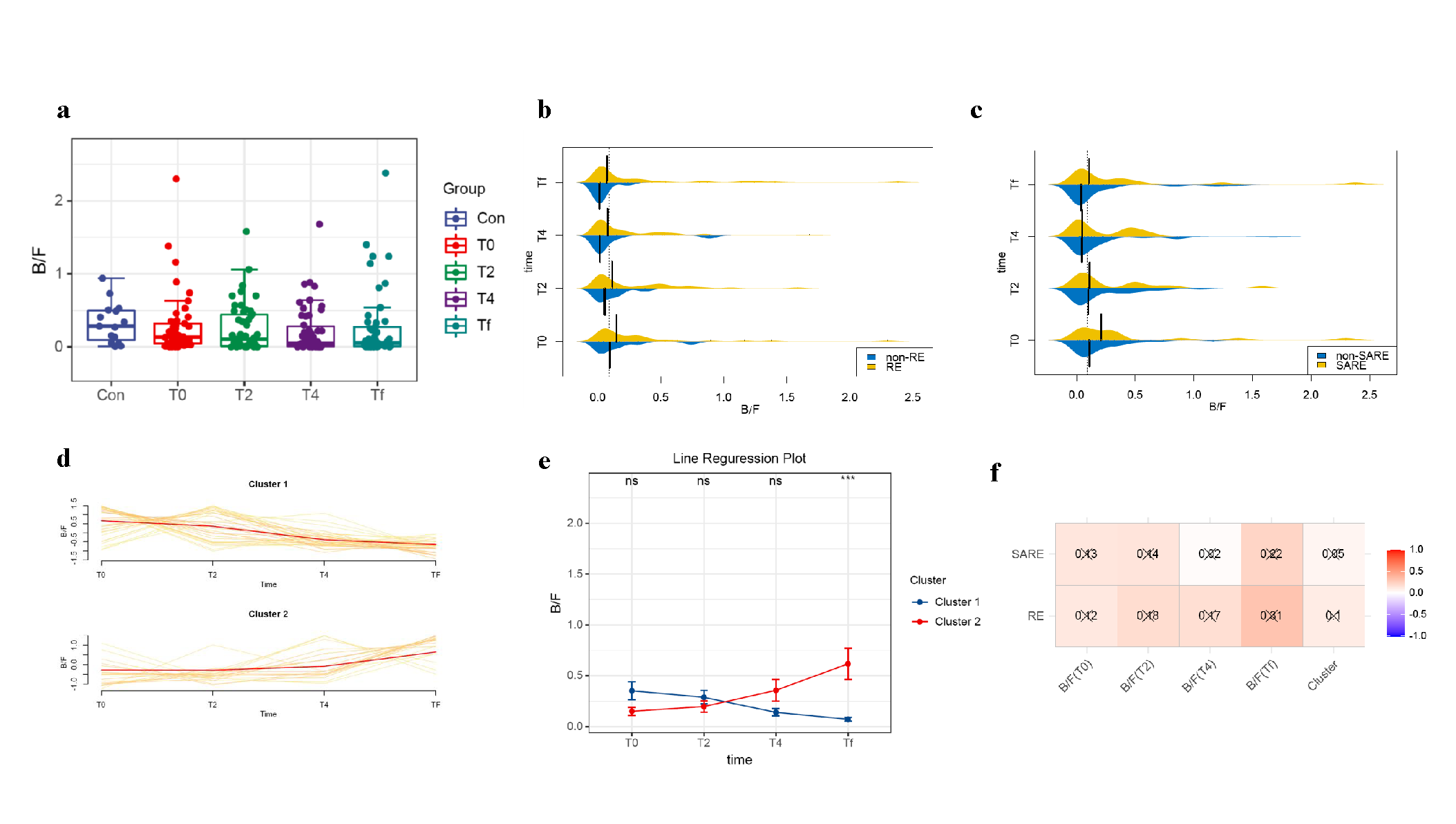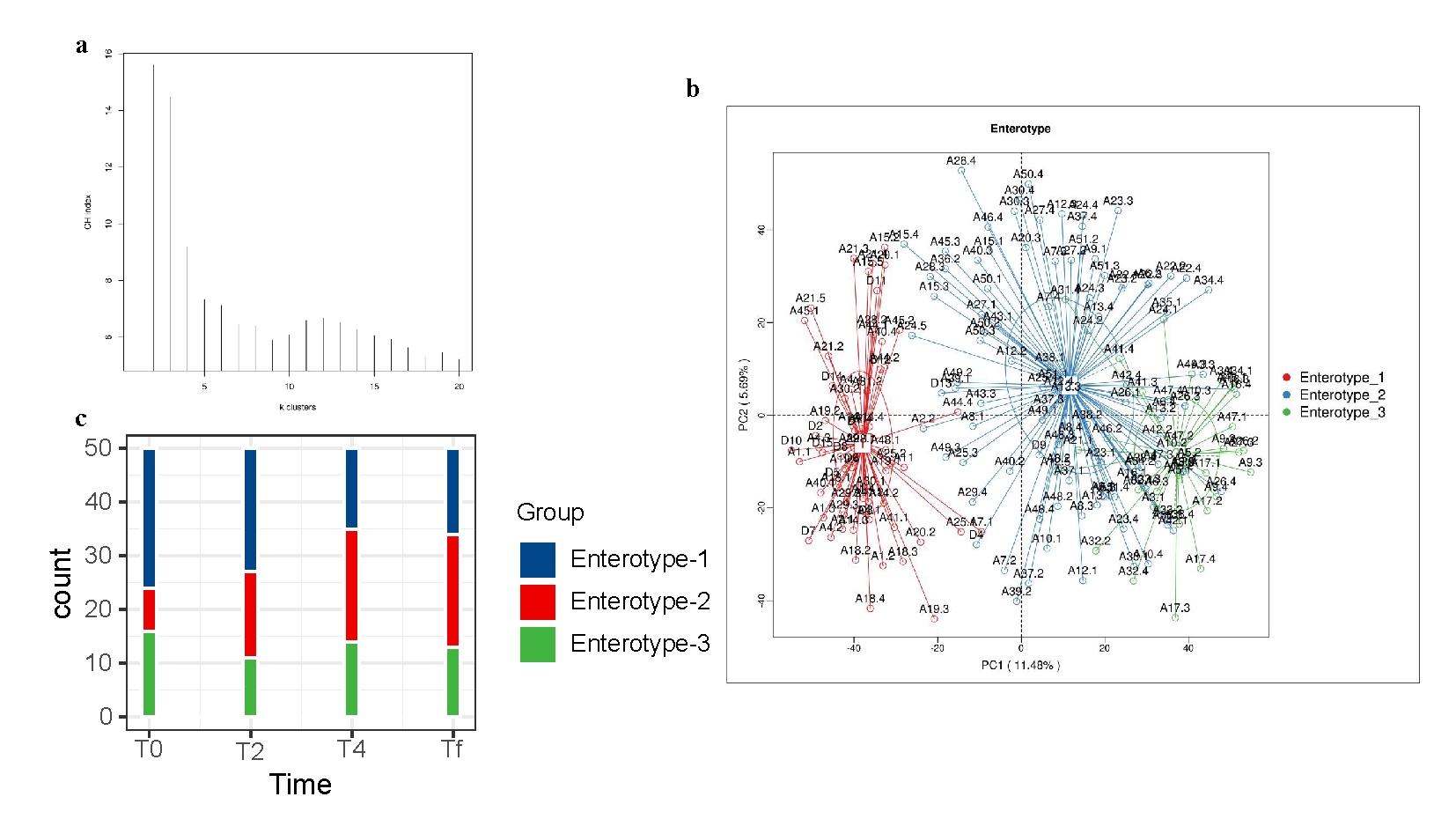1. The top 10 species in abundance included Bacteroidetes, Blautia, Escherichia-Shigella, Faecalibacterium, Ruminococcus gnavus, Lachnoclostridium, Unclassified, Roseburia, Hortella, Megamonas. The ROC analyses were performed on the genus, and most of the AUCs were greater than 0.5, but all of them lacked statistical significance.
2. The ratio of B/F in cervical cancer VMAT patients gradually decreased with dose/time, but there was no significant difference between groups. The B/F ratio of RE and SARE were higher than those of non-RE and non-SARE, especially in the second week of radiotherapy and at the end of radiotherapy, which were increased significantly. However, the B/F ratio could not be used as a predictor of RE or SARE alone.

3. Blautia was defined as enterotype-1, Escherichia.Shigella as enterotype-2, and Faecalibacterium as enterotype-3 through the JSD cluster scoring method. There were significant differences in the enterotype between cervical cancer patients and healthy control women, including the decrease of Blautia, the increase of Escherichia.Shigella and Faecalibacterium which related to the occurrence of cervical cancer. The enterotype were changed during VMAT. Through the univariate Logistic regression analysis, it was found that Faecalibacterium enterotype increased the incidence of SARE at baseline (OR: 5.400, P=0.017), which increased the risk of SARE by 4.4 times compared with Blautia enterotype. It was indicated that Faecalibacterium enterotype could predict the occurrence of SARE. The pathogen Escherichia.Shigella was associated with the increased incidence of SARE during VMAT.
